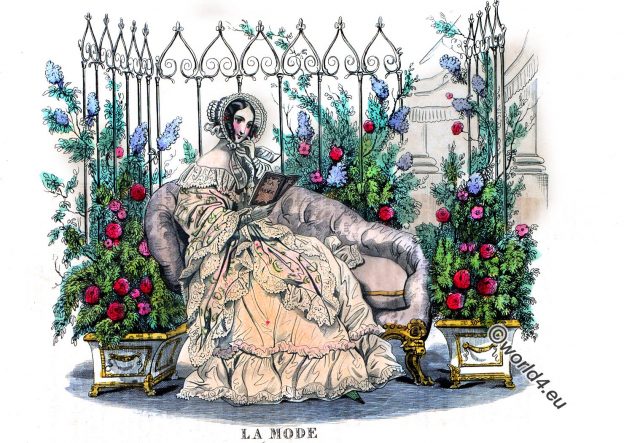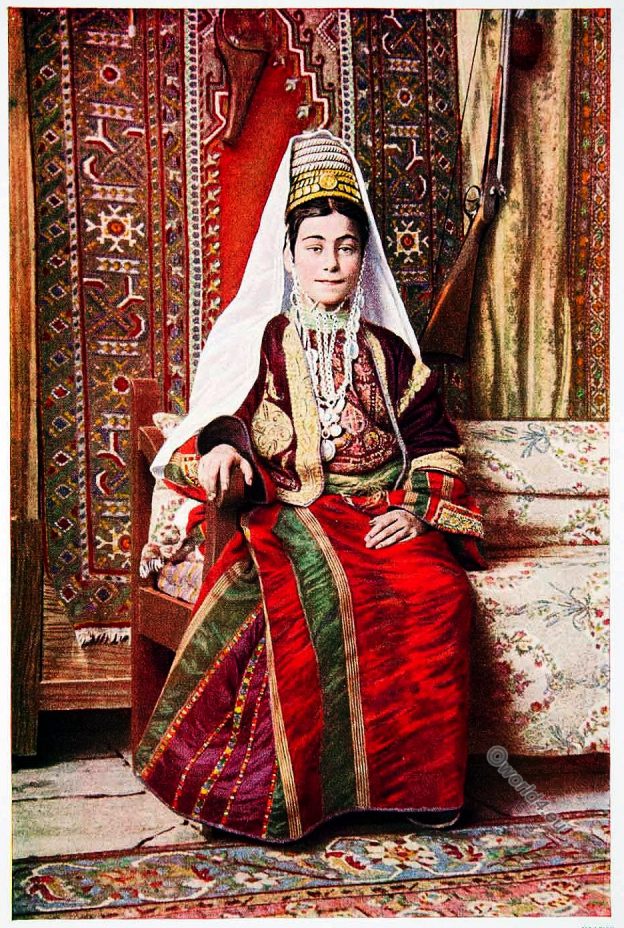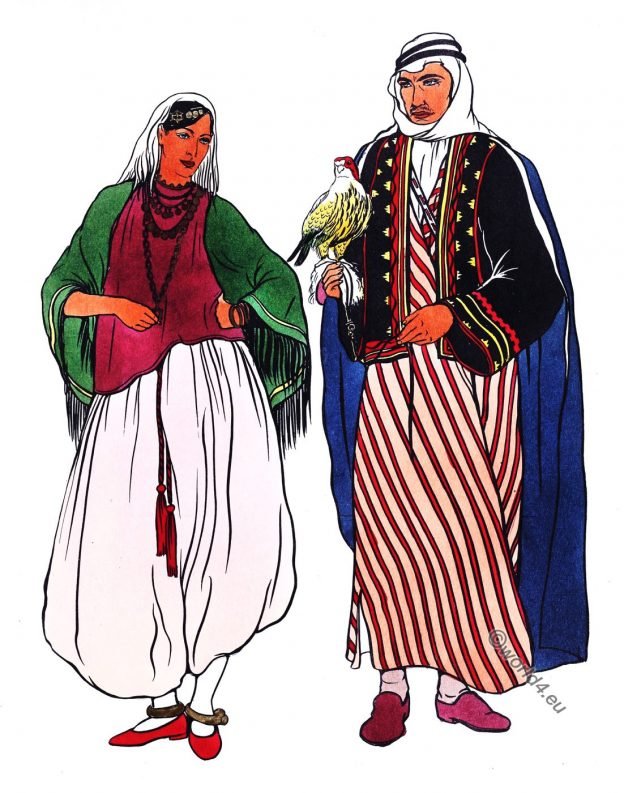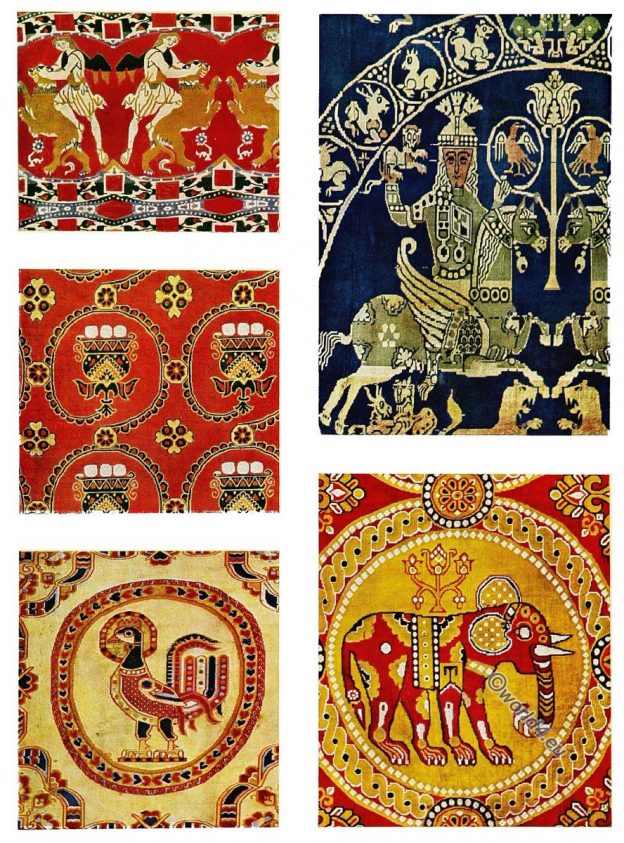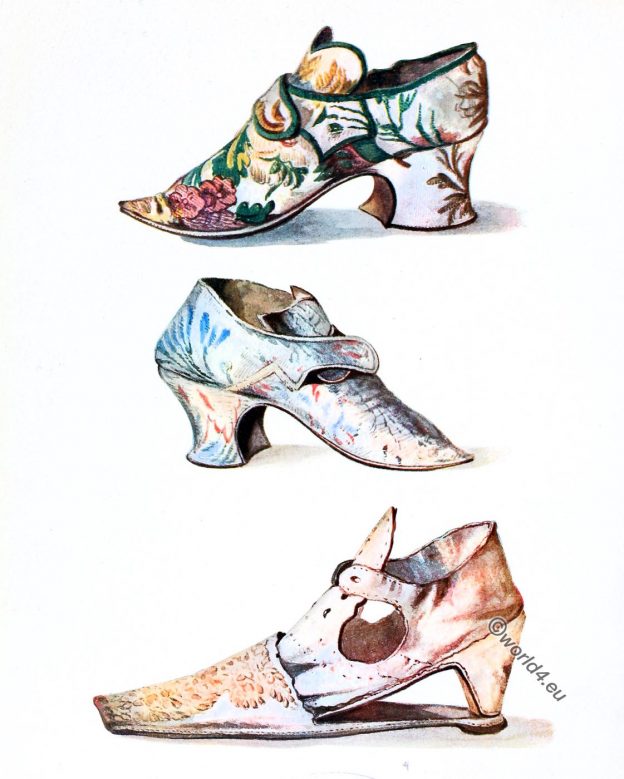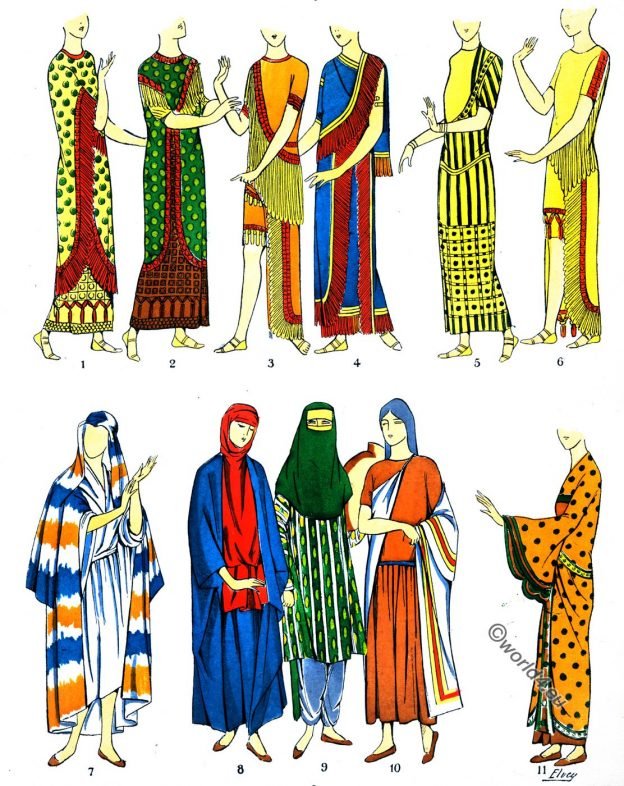As the botanist detects among the hills and valleys some choice and unexpected prize, so you, amid Parisian vulgarities, have encountered a rare and exquisite blossom! It is the PARISIAN LADY!-the “FEMME COMME IL FAUT.”
Married Woman of Bethlehem in richly colored dress.
Married woman from Bethlehem. Over the richly colored dress, a short embroidered jacket is worn.
The dress of the Arabs. Affluent class. Pictorial work.
The name Arab originally was reserved for the nomad tribes east of Palestine and in the Syro-Arabian desert, but today it is generally used for most of the surviving Semitic peoples who, in addition to living in Arabia, are to be found in Mesopotamia, North Africa, the western shores of the Red Sea, and the eastern shores of the Persian Gulf.
Tartan of the Lord of the Isles at about 1750.
The tartan is represented only in the coat of the youth holding the golf-club, the trews being in red and white check; …
Antique Fabrics from Egypt. Coptic Silks. Silks from Alexandria.
Antique Fabrics. Red silk, patterned with figures of Samson and the Lion. Fabric with elephant pattern. Fabric with cock pattern, Persia.
Shoe fashion of the 17th and 18th century.
Examples of combined shoes and clogs. Shoe fashion of the baroque and rococo period.
Traditional costumes and customs of Lithuania. The peasant folkart.
The peasant art of Lithuania. The Lithuanian women wore long wide robes of wool or linen embellished with a relief-like floral ornament. The costume of the men consisted of a long home woven woolen coat of a dark-blue or grey color, resembling in cut and fold the jacket of the women.
Mesopotamia. Luxurious Assyrian dresses, coats and shawls.
Mesopotamia. Luxurious Assyrian dresses, coats and shawls. Fashion common to both sexes.
Queen Elisabeth’s Buskins.
QUEEN ELIZABETH’S BUSKINS. Tudor era
Assyrian Blouses and Ensembles. Costumes common to both sexes.
Babylonian gown. Tunic, blouses and ensembles. Costumes common to both sexes. The Luxurious Assyrian Costumes

